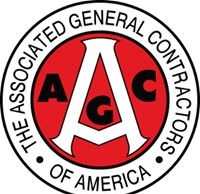Homeowners Advised to Check Fuel Oil Tanks to Prevent Leaks and Spills as Winter Approaches
WASHINGTON, D.C. – November 27, 2015 – (RealEstateRama) — As colder weather descends on the northeast and homeowners receive shipments of home heating oil, the New York State Department of Environmental Conservation (DEC) is urging homeowners to inspect heating fuel oil storage tanks for leaks or spills.
More than two million homes in New York are heated by fuel oil. Each year, hundreds of fuel oil spills from home heating oil tanks are reported to the DEC Spills Hotline. These spills have resulted in contamination of basements, groundwater, wells and soils, and expensive cleanups that are often not covered by homeowner’s insurance.
Some of the most common causes of home fuel oil spills are failing storage tanks; faulty fuel lines and connections; collapsing tank legs and supports; and overflows during delivery. An annual inspection of fuel oil storage tanks can prevent impacts to human health and the environment from leaks and spills.
DEC is providing the following checklists to residents to inspect their storage tasks. If one or more of these items are observed contact your fuel oil service provider. Report any actual spill or leak of fuel oil to the DEC Spills Hotline: 1-800-457-7362.
Above Ground Heating Fuel Oils Storage Tank Checklist
- Bent, rusty, or wobbly tank legs or tank located on an unstable foundation.
- Signs of rust, weeps, wet spots, or excessive dents on the tank’s surface.
- Drips or any signs of leaks around the oil filter or valves.
- Fuel oil lines not covered in a protective casing – even if under concrete.
- Overhanging eaves where snow and ice could fall onto the tank.
- Stains on ground or strong oil odor around the tank location.
- Browning, dying or loss of vegetation around the tank location.
- Silent overfill whistle while tank is being filled – ask fuel delivery person.
- Clogged or restricted tank vent due to snow, ice or insect nests.
- Signs of spills around fill pipe or vent pipe.
- Improperly sized vent pipes – ask fuel delivery person.
- Cracked, stuck or frozen fuel level gauge or signs of fuel around it.
Underground Heating Fuel Oils Storage Tank Checklist
- Water in the tank – ask fuel delivery person to check.
- Oil or oil sheen in your basement sump or French drain.
- Silent overfill whistle while tank is being filled – ask fuel delivery person.
- Clogged or restricted tank vent due to snow, ice or insect nests.
- Signs of spills around fill pipe or vent pipe.
- Well water has strange tastes or smells.
- Complaints from neighbors of fuel oil smells.
- Using more than normal amount of fuel.
For more information on home heating oil tank stewardship, visit the Underground Heating Oil Tanks: A Homeowner’s Guide webpage on DEC’s website.

















